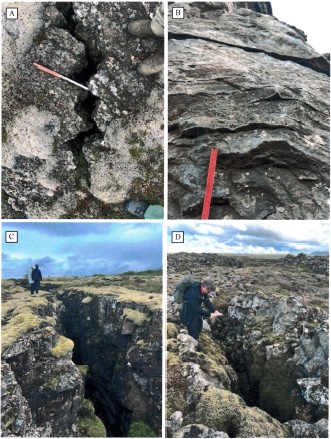22-EPN3-116: Fault Scaling at Southwest Iceland
Visit by Işık Su Yazıcı (German Aerospace Center DLR, Germany) and Sebastian Sturm (University of Freiburg, Germany) to TA1 – Iceland Field Sites, MATIS
Dates of visit: 02-10 August 2023
Fault population studies reveal the lithospheric stress and strength conditions. Geometric fault properties provide insights into mechanical and temporal evolution of fault systems, as well as past and future potential for seismic energy release. Understanding the displacement-length relationship of faults can also help to estimate the current seismicity level. Improved constraints on the current seismicity of Mars based on lnSight mission results, are the motivation for a renewed and detailed analysis of martian fault systems. Partly due to the limited number of reliable datasets, data on the relationships between fault displacement and length of extraterrestrial bodies are scarce. Using Digital Elevation Models (OEM) and corresponding orthoimages derived from High Resolution Stereo Camera (HRSC) data, we previously obtained information on the displacement distribution along faults and the maximum displacement (Dmax) at the Memnonia Fossae (MF) fault system on Mars.
The volcanic rifting zone in SW Iceland displays similar characteristics as MF. Specifically, the availability of airborne HRSC data (HRSC-AX) of an area characterized by widespread normal faults in the rift zone at Thingvellir, and well-exposed faults in Reykjanes, are exceptionally well-suited sites as analogues for the MF. Considering the scarcity of terrestrial analogue work complementing the analysis of planetary fault scaling, this field work helps to improve our understanding of fault scaling relationships: Our goal is to combine terrestrial remote sensing data (HRSC-AX) with ground truth to obtain a better basis for evaluating planetary fault scaling (which relies on remote sensing only).
Read the full scientific report with kind permission by Işık Su Yazıcı.


